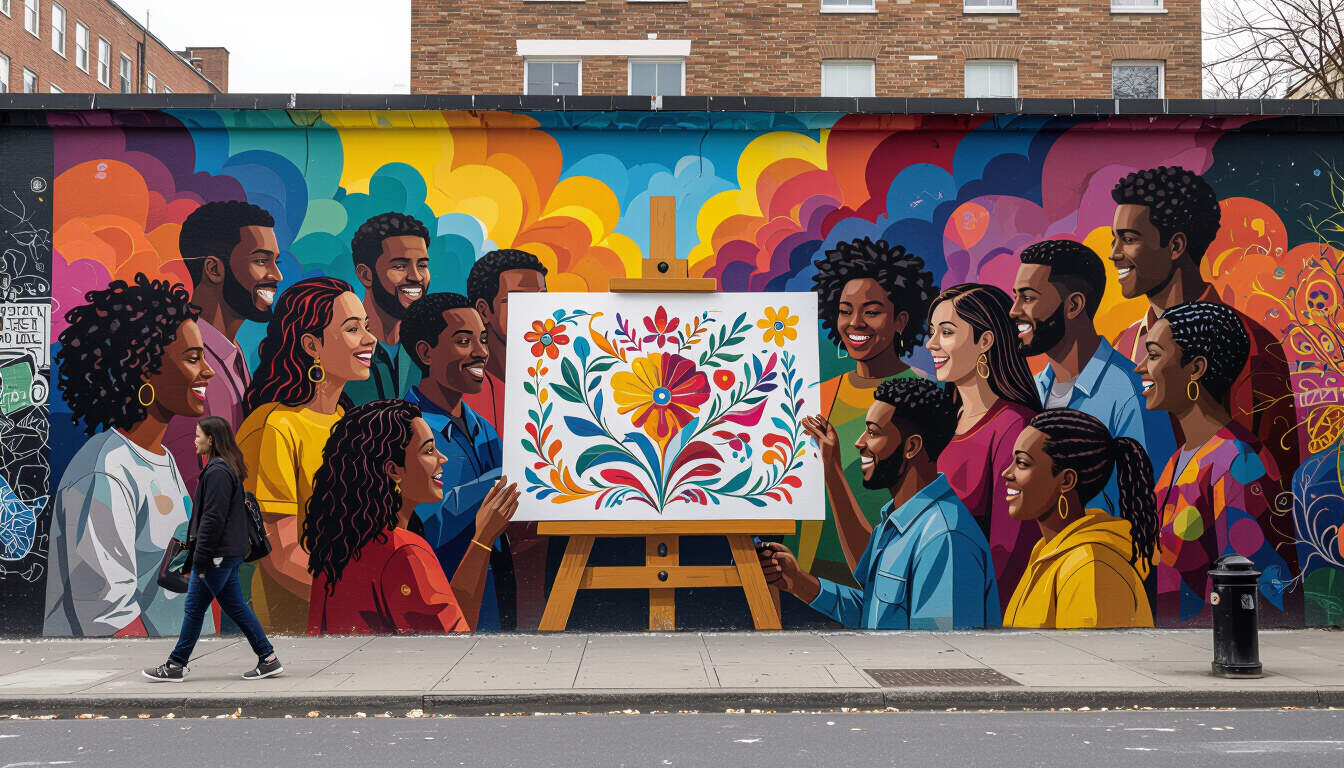Guerrilla PR Through Low-Cost Community Murals for Niche Markets
 by Lilian Nienow
by Lilian Nienow
Discover how low-cost community murals serve as an innovative guerrilla PR tactic for small businesses in niche markets. This approach builds brand visibility and community ties without high expenses, offering practical steps for entrepreneurs to engage audiences effectively.

Community murals offer a fresh way for small businesses to gain attention in niche markets. These public art projects can turn ordinary spaces into vibrant brand statements. By using community murals, entrepreneurs create lasting impressions that resonate with local audiences.
One key advantage is the ability to foster connections. In niche markets, where customers value authenticity, a well-placed mural can highlight a brand's story. For instance, a local coffee shop might depict scenes from neighborhood history, drawing in passersby and sparking conversations.
Planning a low-cost mural starts with selecting the right location. Choose spots with high foot traffic, such as alleyways or building sides in urban areas. This ensures maximum exposure without needing paid advertising. Gather materials from affordable sources like local hardware stores or donations from supporters.
Execution involves collaborating with artists. Many emerging talents work on budgets, making it feasible for small businesses. Involve community members in the process to build excitement and ownership. This not only reduces costs but also strengthens ties, turning participants into brand advocates.
Steps to Implement a Successful Mural Project
To get started, follow these straightforward steps:
- Identify your theme: Align the mural with your brand's core values. For a niche market like eco-friendly products, focus on nature-inspired designs.
- Budget wisely: Aim for under a few hundred dollars by sourcing supplies second-hand or through partnerships.
- Secure permissions: Work with property owners to avoid issues, ensuring the project complies with local regulations.
- Promote involvement: Use social media to invite community input, creating buzz before the mural even begins.
- Document the process: Take photos and share updates to extend the mural's reach online.
Measuring impact is crucial for any PR effort. Track engagement through social media mentions or increased foot traffic after the mural's unveiling. For example, a boutique in a craft market used a mural to showcase handmade goods, resulting in a 20% rise in visitors within weeks.
In practice, these tactics work well for various niches. A fitness brand in a wellness community painted a mural promoting health, attracting new clients through word-of-mouth. The key is to keep designs simple yet meaningful, avoiding overcomplication.
Challenges may arise, such as weather conditions or material limitations, but these can be overcome with creativity. Use weather-resistant paints for outdoor projects and involve volunteers for labor, keeping costs down.
Another benefit is the long-term value. Unlike temporary ads, guerrilla PR through murals provides ongoing visibility. A single project can generate stories in local media, amplifying reach without additional spending.
For entrepreneurs, this method encourages innovation. Experiment with interactive elements, like QR codes linking to your website, to blend art with digital engagement. Always ensure the mural reflects your brand's unique identity to stand out in crowded markets.
Real-world examples show success. A bookstore in a literary niche created a mural featuring famous quotes, drawing book lovers and boosting sales. Such projects not only enhance visibility but also build loyalty among niche audiences.
To sustain momentum, maintain the mural through community clean-up events. This keeps the artwork fresh and reinforces your brand's commitment to the area.
Ultimately, by integrating niche markets strategies with art, businesses can achieve growth efficiently. The approach is adaptable, making it ideal for marketers seeking unconventional paths.
Wrapping up, low-cost community murals represent a smart PR tool. They combine creativity with practicality, helping small businesses thrive in competitive environments.
